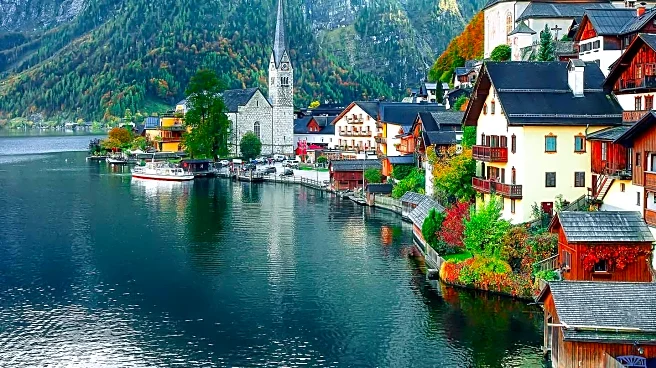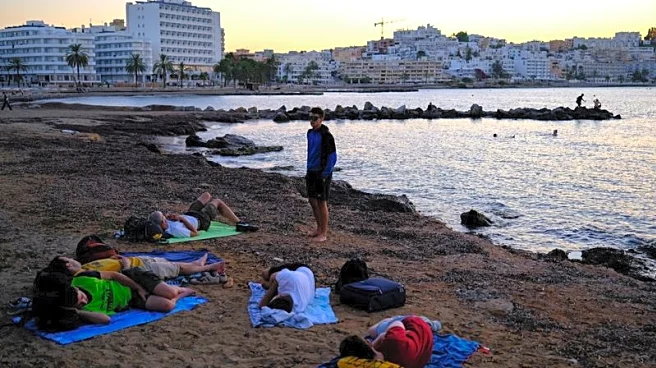What's Happening?
Tourists are increasingly opting for cooler, quieter vacation destinations, moving away from Europe's traditional summer hotspots due to extreme heat and wildfires. This trend, known as 'coolcations,' involves choosing destinations with milder climates and less crowding. Record-breaking temperatures have affected popular areas in Spain, Portugal, and Greece, leading to infrastructure challenges and evacuations. The shift is driven by climate volatility, with travelers favoring coastal or alpine locations and scheduling trips during spring and autumn. Data from the European Travel Commission indicates a preference for off-peak travel, with destinations like Iceland, Norway, and Slovenia gaining popularity.
Why It's Important?
The shift towards 'coolcations' highlights the impact of climate change on travel patterns and the tourism industry. Southern European countries, heavily reliant on tourism, may face economic challenges as travelers seek alternatives. The trend could alleviate overtourism in traditional hotspots but also affect local economies dependent on summer visitors. Nordic countries and lesser-known destinations stand to benefit from increased interest, potentially diversifying tourism revenue. The change underscores the need for adaptive strategies in tourism planning, considering climate risks and sustainable travel practices.
What's Next?
Tourism operators and authorities may need to adjust marketing strategies and infrastructure to accommodate changing preferences. Southern European countries might explore ways to attract visitors during cooler seasons or promote alternative attractions. The trend could lead to increased investment in destinations with favorable climates, enhancing their tourism offerings. As climate change continues to influence travel decisions, stakeholders may prioritize sustainable practices and resilience measures to mitigate impacts on the industry.
Beyond the Headlines
The 'coolcations' trend reflects broader shifts in consumer behavior, emphasizing the importance of environmental considerations in travel planning. It raises questions about the sustainability of traditional tourism models and the need for innovation in destination management. The trend may encourage travelers to explore cultural and natural experiences beyond typical tourist spots, fostering a deeper appreciation for diverse environments.














